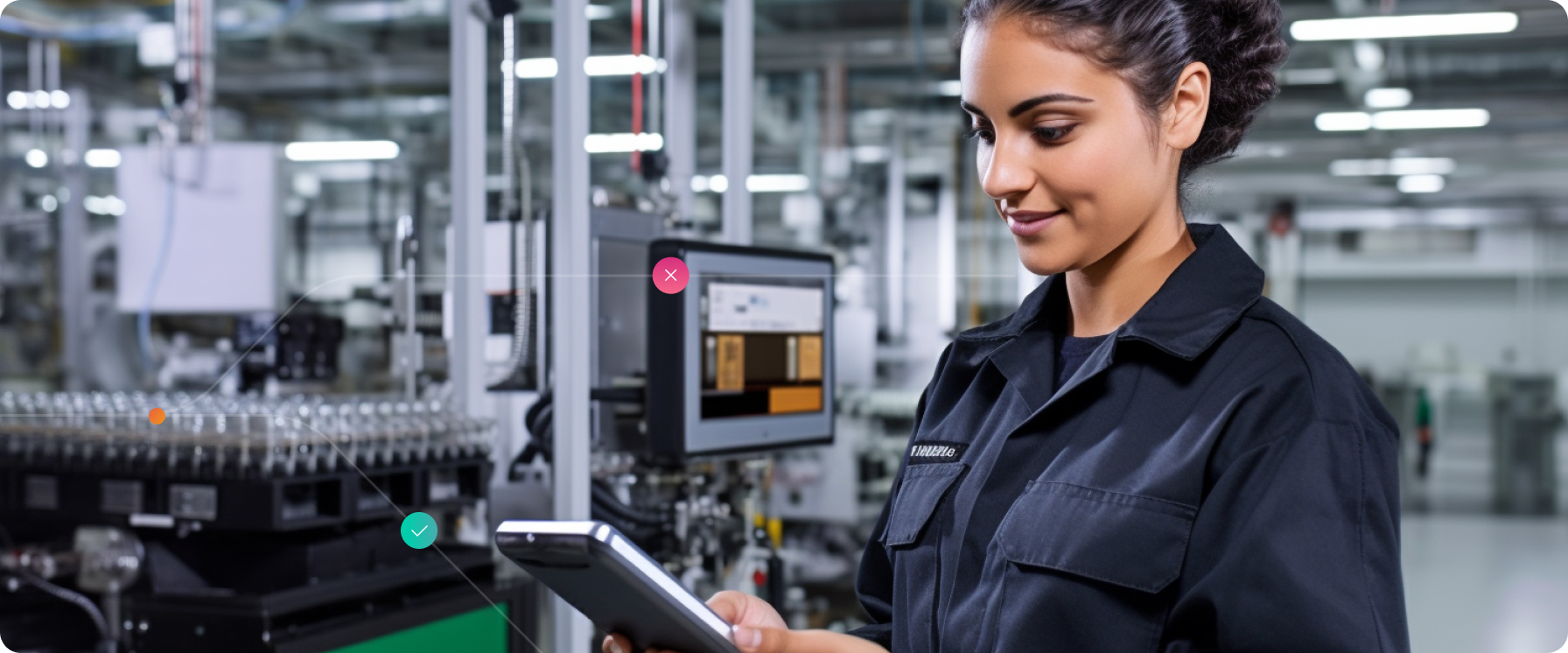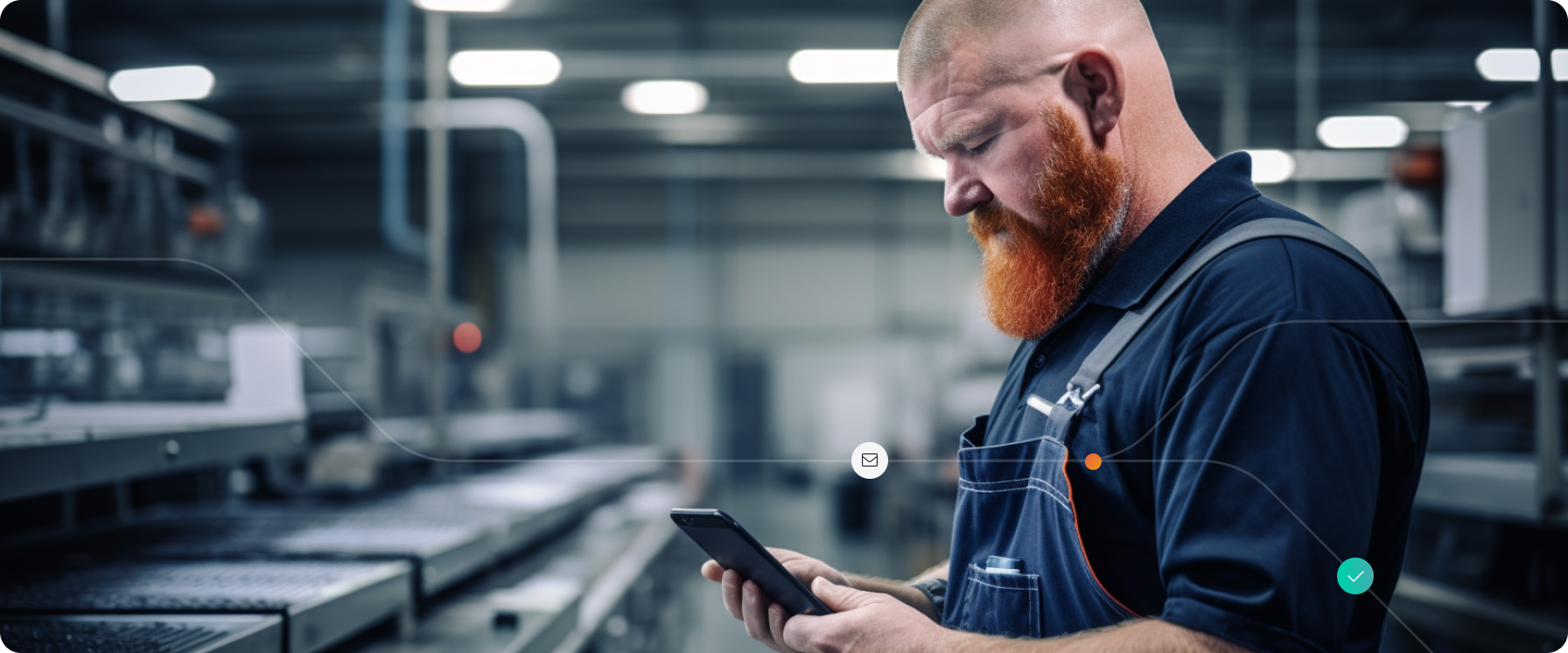Empowering Collaboration with Next-Gen Connected Worker Tools

Overview: A New Era of Collaborative Manufacturing
In today’s manufacturing environment, collaboration is a key factor in achieving operational excellence. Connected Worker solutions are redefining how humans, machines, and systems work together, creating a dynamic, integrated ecosystem that goes beyond traditional approaches.
Key Benefits of Enhancing Collaboration with Connected Worker Tools
Increased Transparency in Manufacturing
- Connected Worker platforms dissolve operational silos, offering real-time insights into every manufacturing stage. This enhanced visibility leads to a comprehensive understanding of processes and better decision-making.
Facilitating Knowledge Sharing
- Digital Work Instructions and Connected Worker tools codify institutional knowledge, mitigating risks related to staff turnover and ensuring a seamless transfer of skills and expertise.
Enabling Real-Time Updates and Reporting
- Access to immediate updates and reports allows stakeholders to make timely, well-informed decisions and adapt swiftly to changes.
Root-Cause Analysis Made Easier
- Enhanced connectivity aids in thorough investigations of root causes, helping to pinpoint and resolve inefficiencies and quality issues.
Optimizing Processes for Better Collaboration
- Connected Worker Solutions identifies and refines processes where collaboration is most beneficial, enhancing overall efficiency.
Quick Resolution of Problems
- Improved coordination leads to faster problem-solving, reducing delays and minimizing disruptions in manufacturing workflows.
Business Advantages
- This improved problem-solving capability leads to enhanced service levels, greater customer satisfaction, and reduced costs, particularly in quality control and waste reduction.
Case Study: Maintenance Department Efficiency
Consider a maintenance department’s efficiency boost as an example of collaboration through Connected Worker Solutions. The use of these solutions can significantly lower mean-time-to-repair (MTTR), increase the time spent on value-added tasks, and decrease annual maintenance costs.
Key Collaboration Features in Connected Worker Platforms
- Real-Time Communication Tools: Foster instant communication among workers for quick information sharing and problem resolution.
- Knowledge Management Systems: Ensure continuous skill transfer and best practices sharing.
- Task Management Features: Organize and track tasks efficiently, enhancing overall productivity.
- Cross-Functional Collaboration Platforms: Break down departmental barriers and promote a unified approach to operations.
Starting Your Collaboration Journey with Connected Worker Solutions
- Identify High-Potential Processes: Pinpoint processes where enhanced collaboration can yield significant efficiency improvements.
- Choose the Right Connected Worker Solutions: Match solutions to your specific needs and ensure they integrate smoothly with your existing systems.
- Create a Technical Roadmap: Outline your implementation strategy, addressing challenges and scalability.
- Align with Digital Transformation Goals: Ensure your collaboration efforts are in sync with your broader digital strategy.
- Promote a Collaborative Culture: Implement training and incentives to encourage widespread adoption and effective use of Connected Worker platforms.
Incorporating these strategies and tools into your manufacturing operations can lead to more cohesive, efficient, and productive outcomes, fully leveraging the potential of Connected Worker Solutions.
This was just a teaser, of what we have to show you. To learn everything about Connected Worker – read our in-depth white paper:



